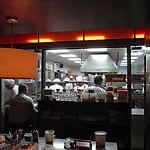Checking in on Lima, Peru's delicious restaurant revolution

Skift Take
Against expectations, the sweet chunks of banana perfectly complemented the raw fish marinated in lime juice, onions, coriander and Peruvian yellow chillies. I was tasting a new sort of ceviche, the seafood salad served across Latin America, in Amaz, a new Amazonian restaurant opened by Pedro Miguel Schiaffino, one of Lima's leading chefs. To a European palate, fruit with uncooked fish might seem outrageous but in Peru, it is logical. The banana replaces the steamed sweet potato commonly served with ceviche to soak up the tangy juices.
The creative take on Peruvian and jungle classics at Amaz (Avenida La Paz 1079, +51 1 221 9393, amaz.com.pe, £30 a head) means the simplest dishes – such as tacacho, mashed and fried green bananas, with cecina, dried pork, both Amazonian staples – drip with unexpected layers of flavour.
For most visitors to Peru, local fare used to mean roast guinea pig, nibbled en route to Machu Picchu. The idea of coming here specifically to eat would until recently have elicited bafflement, if not derision. But Peru, whose economy is booming, has come a long way in the past two decades, since the nadir of macroeconomic meltdown and a bombing campaign in Lima by Shining Path terrorists. Its cuisine has come even further.
Schiaffino is one of a generation of chefs who fled to train abroad before returning to reclaim their rich gastronomic heritage. To visit Schiaffino's first restaurant, Malabar (Calle Camino Real 101, +51 1 440 5200 (malabar.com.pe), and those of Peru's other top restaurateurs, Rafael Osterling and Gastón Acurio, is to hear a melting pot of Latin American accents, as foodies revel in this culinary revolution.
Acurio is the chef who kickstarted Peru's gastronomic boom, seeking out ingredients and recipes from the humblest of cooks. Osterling's flagship restaurant, Rafael (San Martín 300, +51 1 242 4149, rafaelosterling.com, from £35 a head), is regarded by some as Lima's finest. A signature dish is suckling goat stewed in Madeira wine, served with tacutacu, Afro-Peruvian rice and beans, and fried plantains.
Peru has long had spectacularly original and varied cuisine, influenced by Italian, Chinese, Japanese, African and, of course, Spanish traditions, blended with techniques and flavours of indigenous foods. Disparate topography has provided Peruvian cooks with an unrivalled natural pantry, including tropical rainforest, the altiplano, and some of the world's most prolific and diverse fish.
Traditionally, Peruvian cooking was enjoyed at home, while fancy restaurants offered foreign food. The change since the turn of the millennium has been breathtaking. Peruvians of all classes now take huge pride in their cuisine, while young people flock to study at a growing number of culinary schools.
"Other than our pre-Colombian heritage, food is our greatest source of national pride and identity," says Ericka La Madrid, who runs Delectable Peru (+51 987 375867, delectableperu.com), which offers gastronomic tours of Lima from £40 a head.
Leader of the pack is Astrid y Gastón (175 Calle Cantuarias, +51 1 242 5387, astridygaston.com, from £35 a head), the award-winning restaurant founded in 1994 by Acurio and his German wife, Astrid Gutsche. Acurio's championing of Peru's street cuisine and small-scale farmers has given him rock-star status.
"Normally, good cooking is seen as elitist, but here it is the other way around," he tells me. "There is no high cooking or low cooking here."
Acurio says tourists should not get hung up on Lima's burgeoning reputation for haute cuisine but try out more modest restaurants and street stands, where you can buy a menú (set meal) of two or three courses for as little as five soles (about £1.20). Typical fare might include papa a la huancaína, slices of boiled potato in a cheesy, yellow chilli sauce, estofado, a stew of chicken, tomatoes, peas and carrots, and steamed or fried fish.
If you're set on eating guinea pig, try the version at Astrid y Gastón, which the menu describes as having visited Beijing before travelling to Shanghai. Rodent never tasted this good.
![]()





